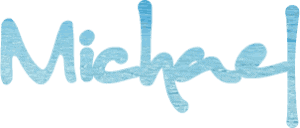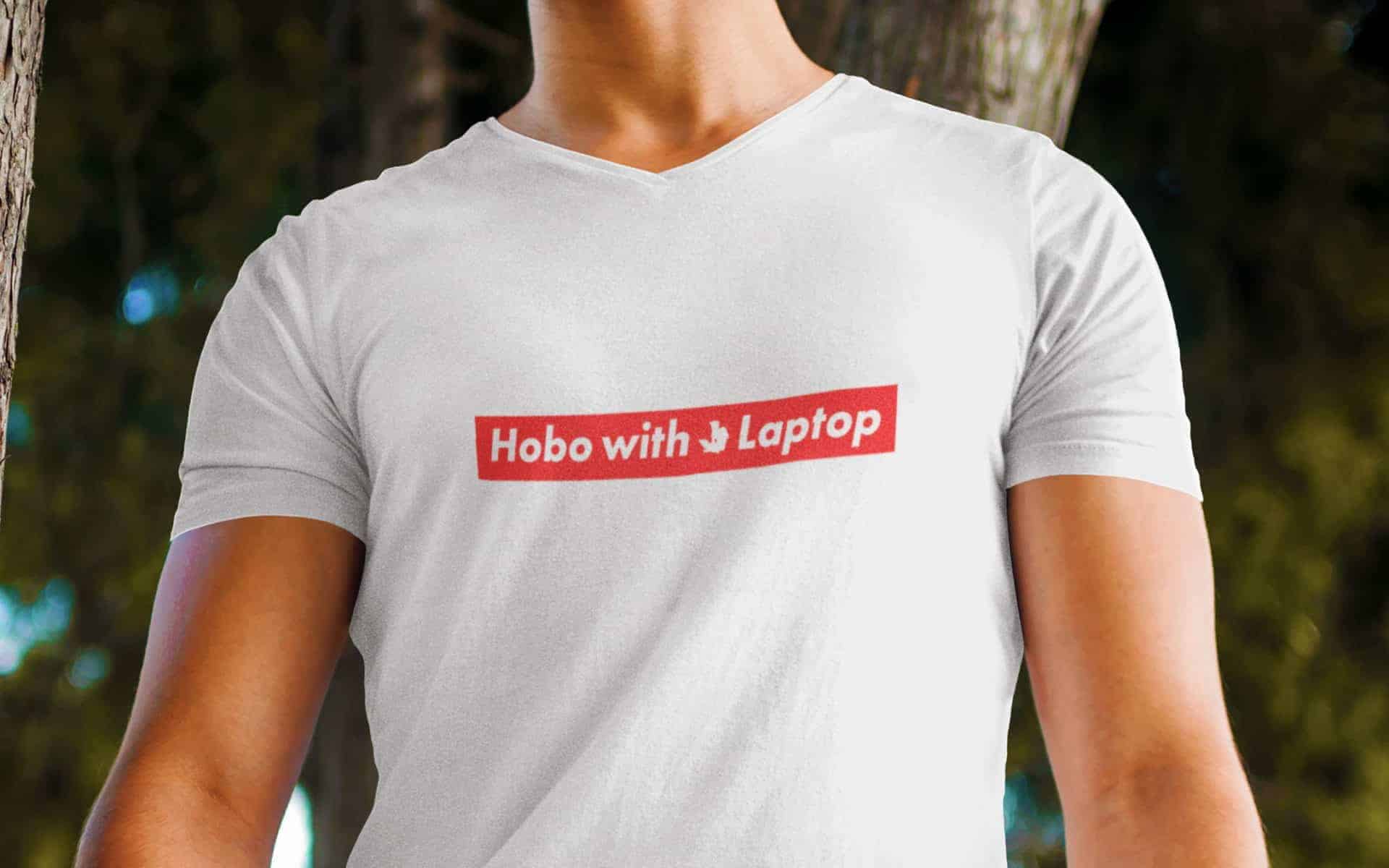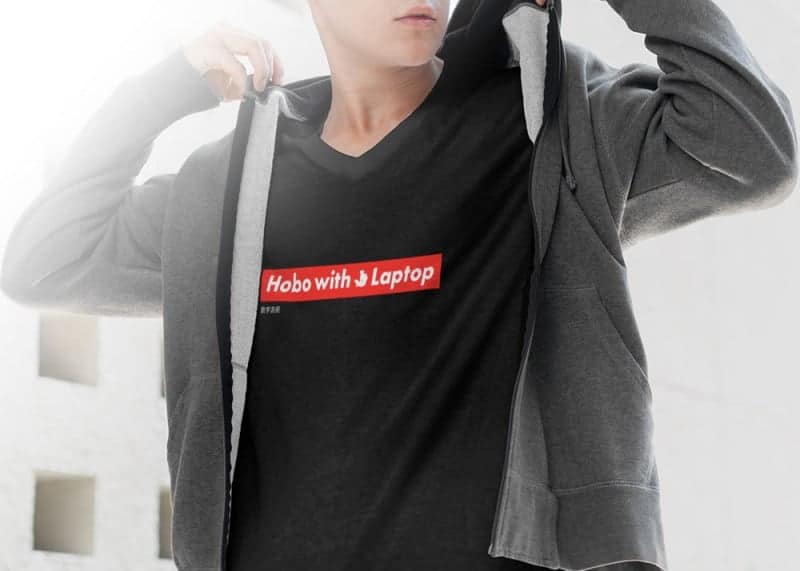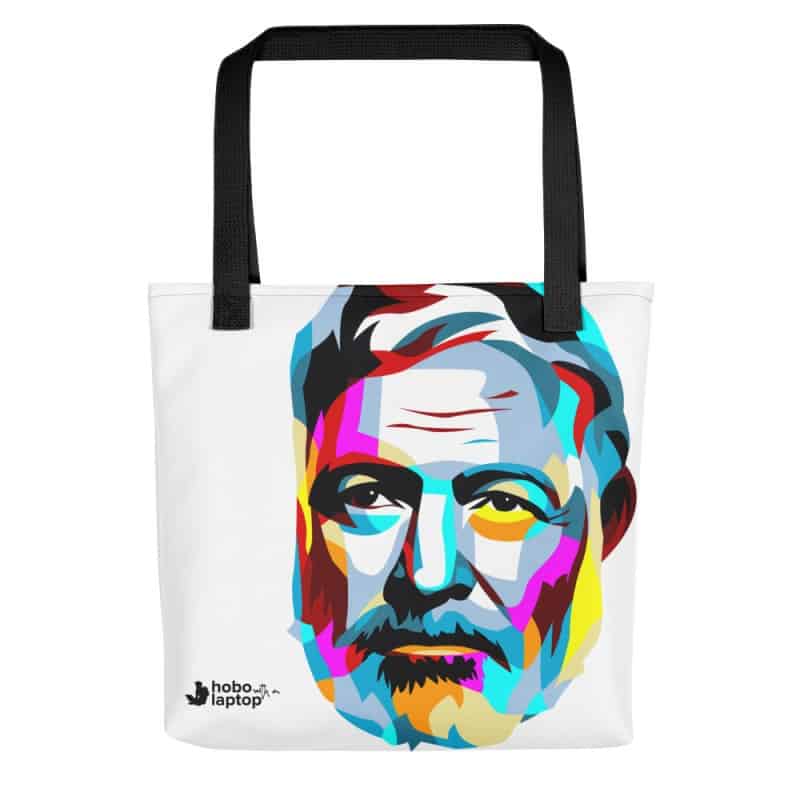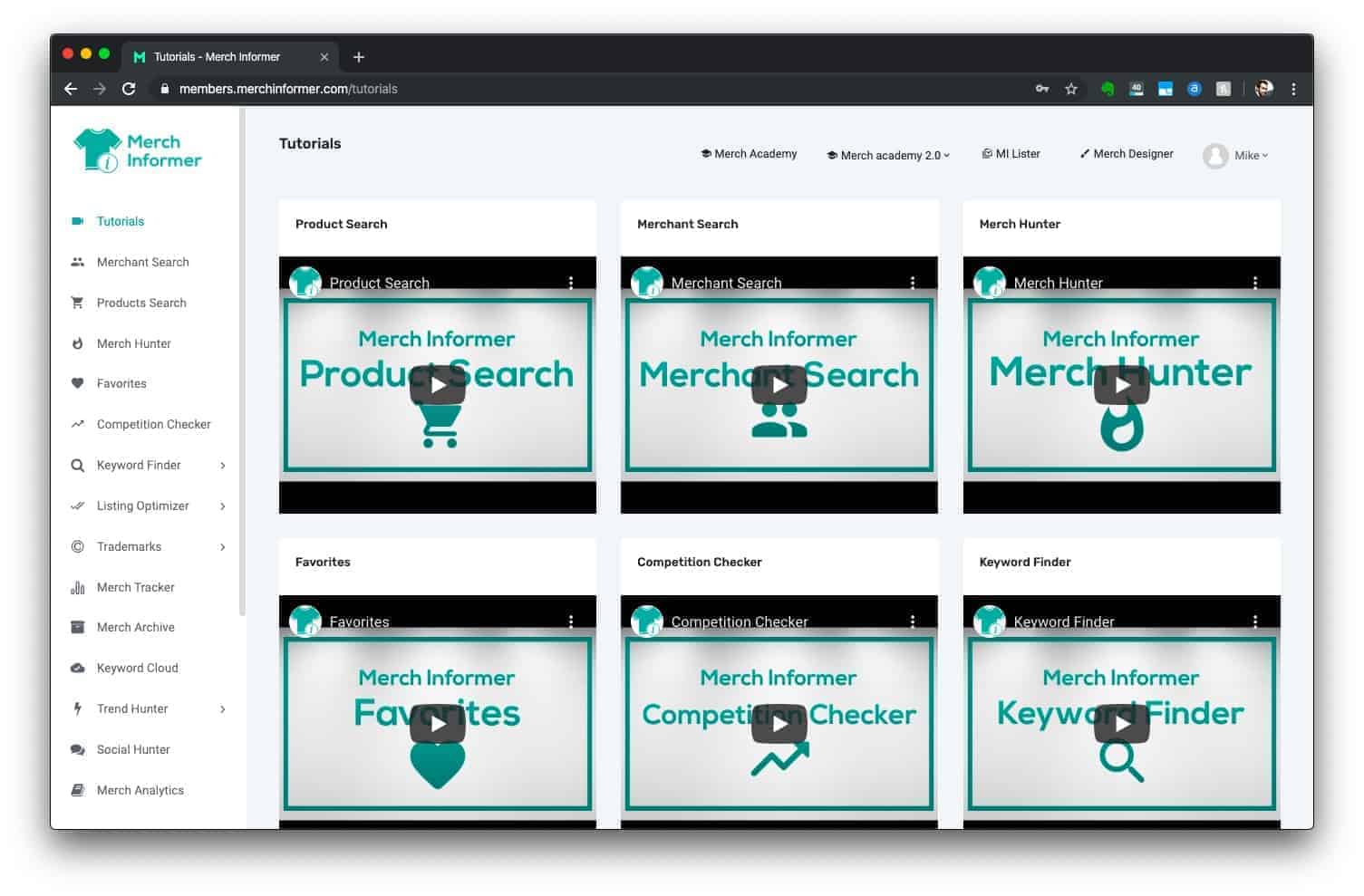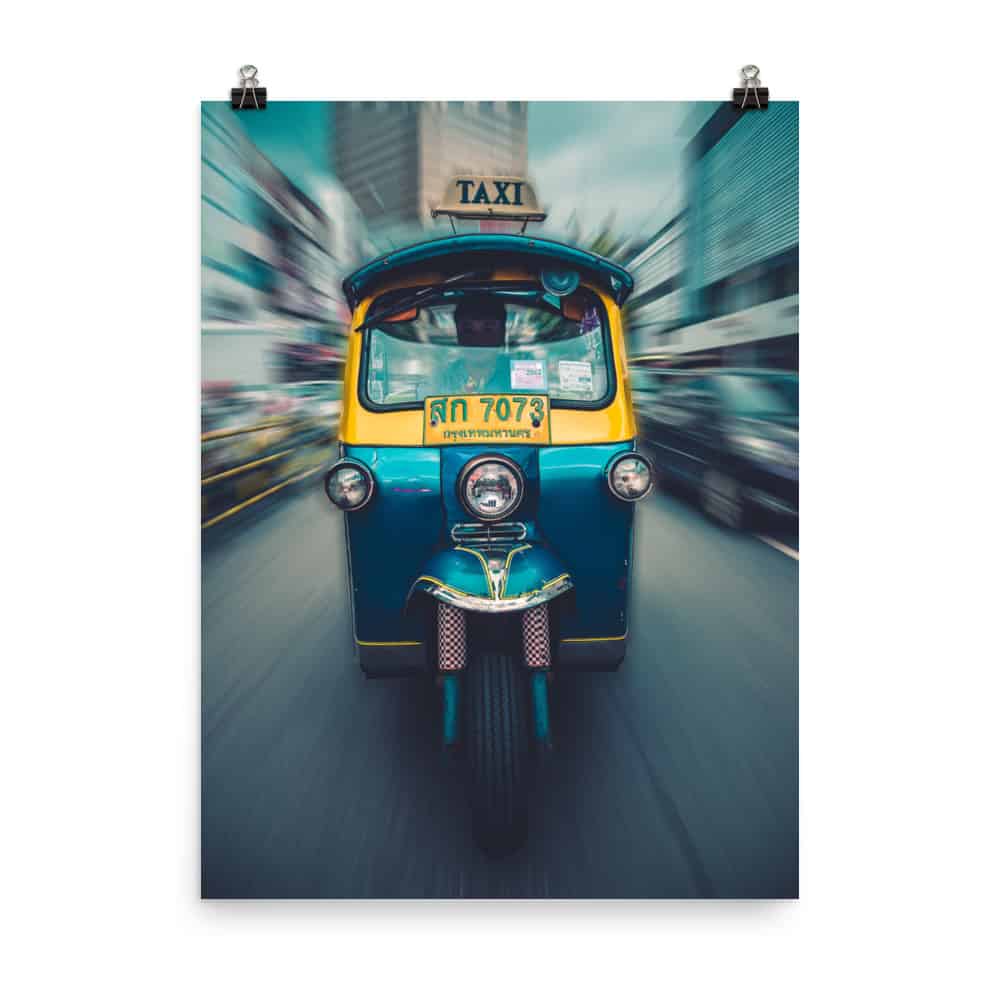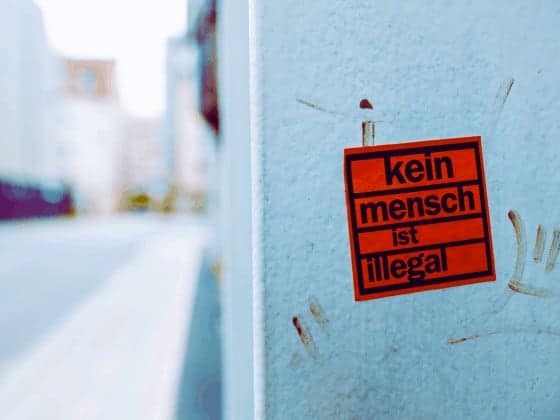

In this guide you’ll learn how to make money selling t-shirts online with no inventory, no experience, with or without your own website.
This article was written for people learning how to sell merch to scale a business –and anyone who just wants to learn how to make your own shirt as a one-off.
We cover all the nuts and bolts, for beginner and intermediate shirt designers alike. However, if you’re just here because you need to make money quickly, you may want to read this post instead.
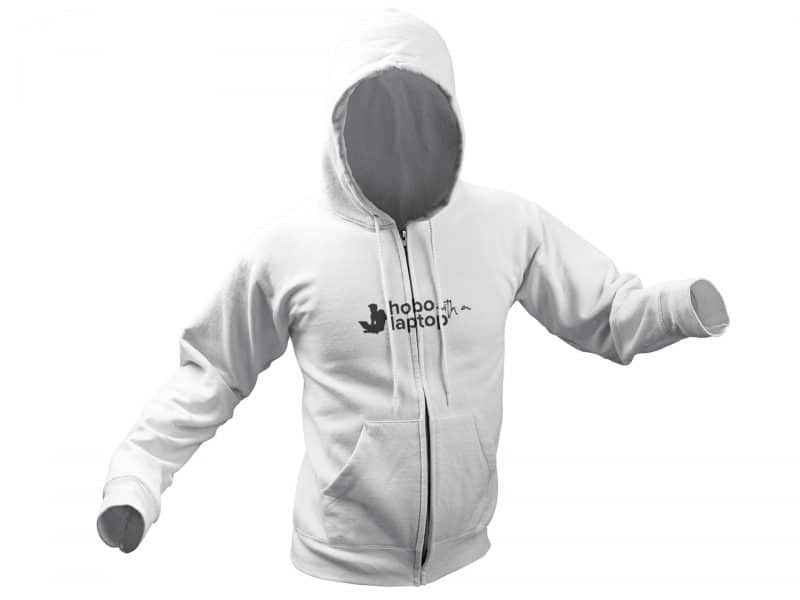
Table of Contents
Before the holidays we spent some time fine tuning our affiliate websites to wring out more profits from them. We cut some affiliate programs we’re enrolled in, deleted numerous off-topic articles, updated out-of-date content, and re-evaluated our keywords on our top money-making posts and pages.
After a serious round of housecleaning, we turned to selling products online without inventory to see if we could go even further.
Within our first 24 hours we were able to setup a store, upload our first design, and make a sale. Subsequent designs have mostly had success with less effort than expected.
Learning how to sell t-shirts directly on our websites with Printful made sense to us because each of them already had an existing audience, mailing list, and customers who have pulled out their wallet before.
But we didn’t stop there; we uploaded our designs to a number of marketplace websites like Teepublic, Teespring, Merch by Amazon, and Etsy because they have their own customer pools we’d like to dip our toes in, too.
We’re a little floored by how quickly we started making money selling personalised t-shirts and products online without inventory or any prior hands-on experience with these platforms –and now we’re going to show you how you we did it.
Of course results will vary, but we’re confident this article’s got everything you need to sell t-shirts online and make money with easy to use “print on demand” services.
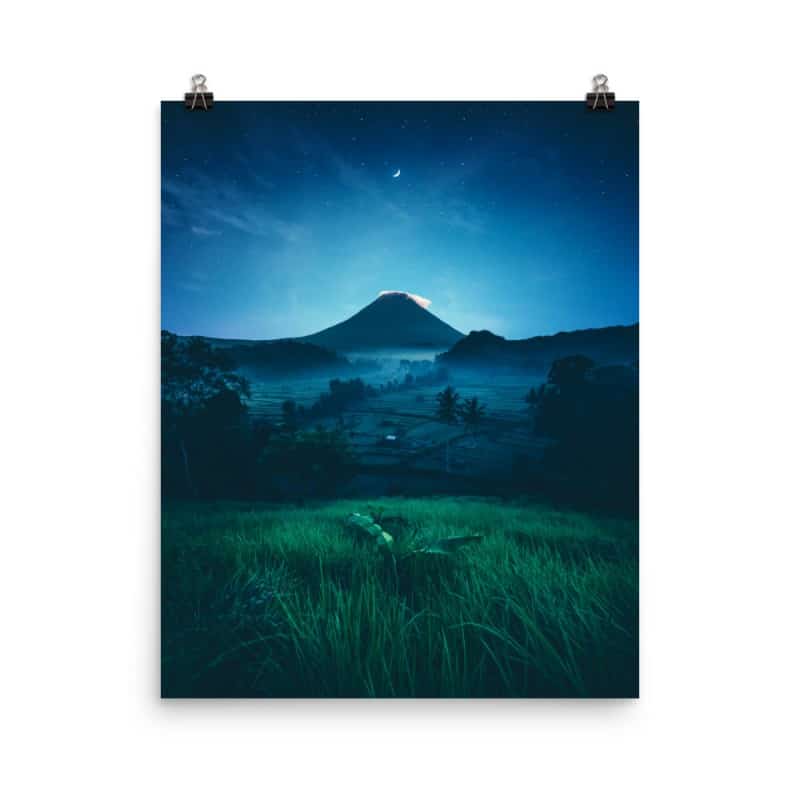 More Than Shirts
More Than ShirtsRemember, you can do more than just sell shirts online; sell prints, framed canvas prints, tote bags, beach towels, tapestries, backpacks, cellphone cases, flip-flops, apparel for kids and adults, even onesies, and home decor accessories like coffee mugs, pillows, beanbag chairs, and more.
Every fulfillment partner has their own product collection to work with, the above example is a print we produced for a Printful store.
Even with all these items in the catalog, startup costs are roughly the same no matter which product you choose to make and sell.
Learning how to sell t-shirts online with these platforms wasn’t something we necessarily wanted to do, but we felt like we were leaving money on the table if we didn’t.
There’s a lot of reasons why creators may want to learn how to sell merch;
- Generate new revenue streams
- Compliment an existing offer
- Open a dialogue with customers –“do you like this?”
- Create brand recognition and awareness
- No risk; no sale, no cost to creators
- Easier than drop shipping, similarities with FBA
- Cheap international delivery; more people, more potential
- Upload your design, write a description, and you’re done
When you sell t-shirts online you gain a deeper understanding of what your customers will pay for, you empower vocal fans to spread the good word, and you make money –what’s not to like?
Design for international markets for a never-ending supply of cultures, memes, trends, and styles to inspire your designs.
We added a live merch shop to Hobo with a Laptop with Printful so you can visualise how one might look integrated into your own website.
How to Sell Shirts Online Without Inventory
Let’s start from the ground up and look at all the moving parts involved with selling shirts online without inventory. After that we’ll break down how to do it.
Step 1
Start with a creative design you want to turn into a product, like your logo, photo, catch phrase, slogan, or character.
Step 2
Once you’ve got your first design you’ll need a “fulfillment partner” like Printful or Teepublic to produce, ship, sell shirts online (and other merch) –they do all the work
Step 3
And finally, you’ll also need an online storefront where customers can find your products and order them. This can be on your own website with Printful like we did or an aggregate storefront like Amazon, or Teepublic, etc.
To sell shirts online without inventory, on-demand services will be required; let’s take a look at how print-on-demand works, what sort of startup costs you’re looking at, and then elaborate on a number of POD fulfillment partners.
After that we’ll cover the tools we use to cut corners and make our merch selling even easier.
What is Print-on-Demand?
Print-on-demand (POD) is a process of working with a fulfillment partner (FP) to customise, produce, and ship products on your behalf.
“White labelling” is when your FP makes their own involvement less visible, putting your logo on shipping labels instead of their own, and integrating seamlessly into your own website so people don’t leave your site to make a purchase. As mentioned a few times, we did this with Printful.
These services allow content creators to sell unique merchandise to their audience with little or no upfront costs, and sell it globally –often with fulfillment partners in different parts of the world to lower the cost and duration of shipping.
It’s a lucrative enterprise and a great stepping stone between affiliate marketing and drop shipping.
How Print-on-Demand Works
Print-on-demand is a great way to monetise an existing website by selling merch like personalised t-shirts, crop tops, tote bags, coffee mugs, framed prints, socks, backpacks, pillow, beach towels, and more —without any physical labour on part of the creator.
- No mandatory upfront cost for creators
- No data-entry or printing shipping labels
- No printing or ironing-on adhesives
- No inventory management or storage
- No handling boxes or products
- No trips to the post office
- No requirement to be in your home country
In most cases your FP will allow creators to adjust their own product profit margins. On the backend they’ll show you their base cost to create the product, and then allow you to mark it up. The customer can only see the marked up cost.
When a sale is made your FP takes their share of the transaction and you get the profit. This is paid out in different ways that vary by FP.
Customer service relating to print anomalies are typically handled by your FP with returns accepted on your behalf.
I’ll get into specifics throughout the article.

Startup Costs
Potential startup costs to sell t-shirts online may include;
- Paying a designer to create an original design for you ($5 and up)
- Cost of stock art to use in your designs ($5 and up)
- Marketplace product listing fees (20 cents or so, each on Etsy)
- Any costs associated to a self-hosted website or Shopify store (optional, intermediate step)
Other costs you may run into after your first sale;
- Paying the difference if your sale price is lower than your fulfillment base cost
- Returns because feelings; if FP didn’t mess up, they don’t have to cover cost of returns and you pay customer back full amount, eat the cost
- Online ad campaigns to put your product in front of relevant audiences
You won’t carry the cost of any merchandise before a customer pays for their order, so there’s no risk to you unless they return it for personal reasons.
To avoid returns, make sure the DPI resolution of your design is higher than what is required by your fulfillment partner.
Starting with No Money?
Don’t let the costs above sink your boat if you’re straight up broke.
If you are coming at this without a willingness to spend a dime like we did, I’ll get into specifics throughout the article about how to make your first shirts and sell merchandise online for free with no upfront cost.
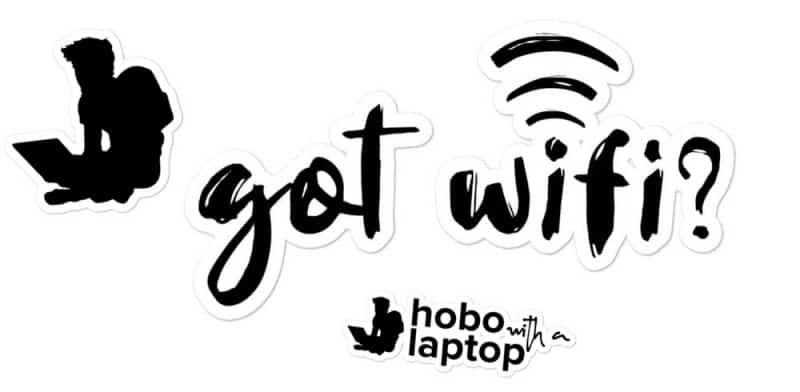
Returns
If you sell t-shirts online and one of them is defective, your FP will typically send out a replacement to your customer for you, at no charge to you, if it’s their fault (like if there’s a defect with the shirt’s sewing, bleeding print job, etc).
If your design is flawed (too low-resolution, for instance) or the customer returns a product for personal reasons they may get a full refund, in which case the difference will be deducted from your profits automatically.
With Printful your profits are available instantly. Marketplaces will have their own payout thresholds and payment schedules.
If you choose Printful, it’s advised you carry a balance in your Printful wallet, PayPal balance, or credit card to cover any unexpected returns after you get rolling.

Order Fulfillment
We sell products on multiple platforms to ensure maximum exposure, which is crucial if you’re just starting out with no audience and/or don’t have the skills/budget or desire to drive sales with an online ad campaign.
POD fulfillment partners are autonomous with no upfront costs and their charges are baked into the cost of the shirt. You can often choose the asking price and profit margin for your products and payments are typically handled by PayPal.
All fulfillment partners on this list have a product design tool that makes uploading designs and customising products straight forward and easy.
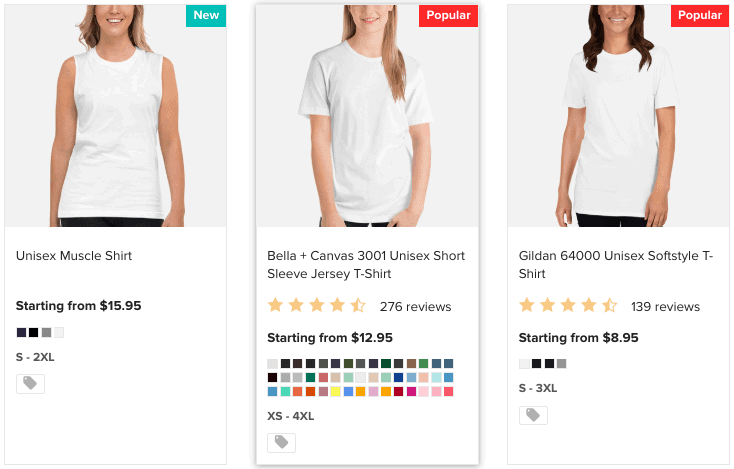
For simplicity I’ll chalk fulfillment partners up to “marketplaces” and “integrations”.
“Integrations”
Integration refers to orders processed on one platform seamlessly communicated to and fulfilled by another platform. As in, when a customer makes an order on your own website, another website/company fulfills the order behind the scenes.
In this article we’re all about Printful because it can be integrated into your website, blog, and/or Etsy marketplace store.
You have more control over an integration; get paid instantly, more administration features, retain customer information.
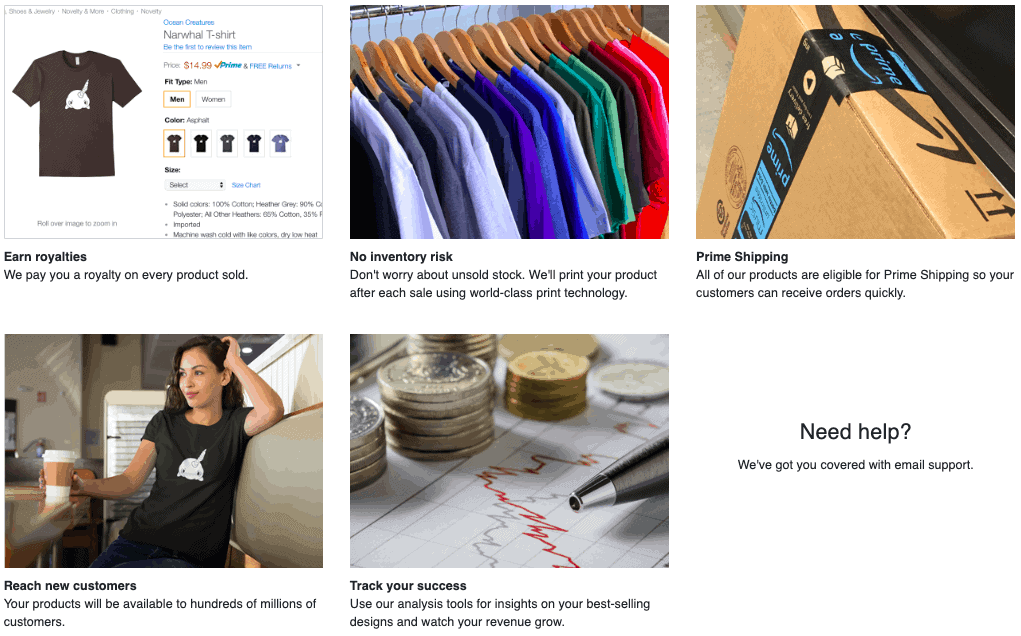
“Marketplaces”
Marketplaces like Teespring, Teepublic, et al. are one-stop shops, putting your merch on the same shelf as millions of others –which is both bad and good.
A t-shirt marketplace can bring you a lot of interested buyers, but you have to play by their rules. Some, like Merch by Amazon (above), may not accept you if they don’t think you’ll be a hot seller.
They often own the relationship to your customers because marketplaces like Amazon will not share your customer contact information with you. You have to use their platform to send messages to your customers instead.
This means you rely on marketplace platforms to communicate with customers, and you don’t “own the racecourse”, you’re merely borrowing the space.
If they drop you, you lose everything. And that’s why we’re die-hard Printful fans.
At the end of the day;
- They all fulfill your order so you don’t have to
- Using several of them at once allows you to reach greater audiences
- They all move your product and make money
Platforms we cover;
- WordPress website (fulfilled by Printful)
- Shopify website (fulfilled by Printful)
- Etsy (marketplace fulfilled by Printful)
- Teepublic (marketplace with fulfillment)
- Merch by Amazon (marketplace with fulfillment)
- Teespring (marketplace with fulfillment)
Printful Integrations (WordPress, Shopify, and Etsy)
Printful is a white label POD fulfillment partner that links to both Etsy marketplace shops and/or WordPress or Shopify websites to automatically receive orders, produce product, and ship (read: fulfill) customer orders on your behalf.
Etsy will not fulfill your orders for you like other marketplaces.

You upload and create your design on the Printful website, and then pull them into WordPress or Etsy.
WordPress and Shopify
On Shopify, Printful is an app. On WordPress, Printful is a plugin that works with (requires) a WordPress ecommerce plugin called WooCommerce.
Learn how to create a WordPress website.
Etsy
On it’s own, Etsy is a marketplace, but it isn’t a fulfillment partner –either you, or a company like Printful will need to fulfill orders for your Etsy store.
Use the Printful integration with Etsy and let Printful do the manual work. Worth mention, other marketplaces like Teepublic do not require Printful.
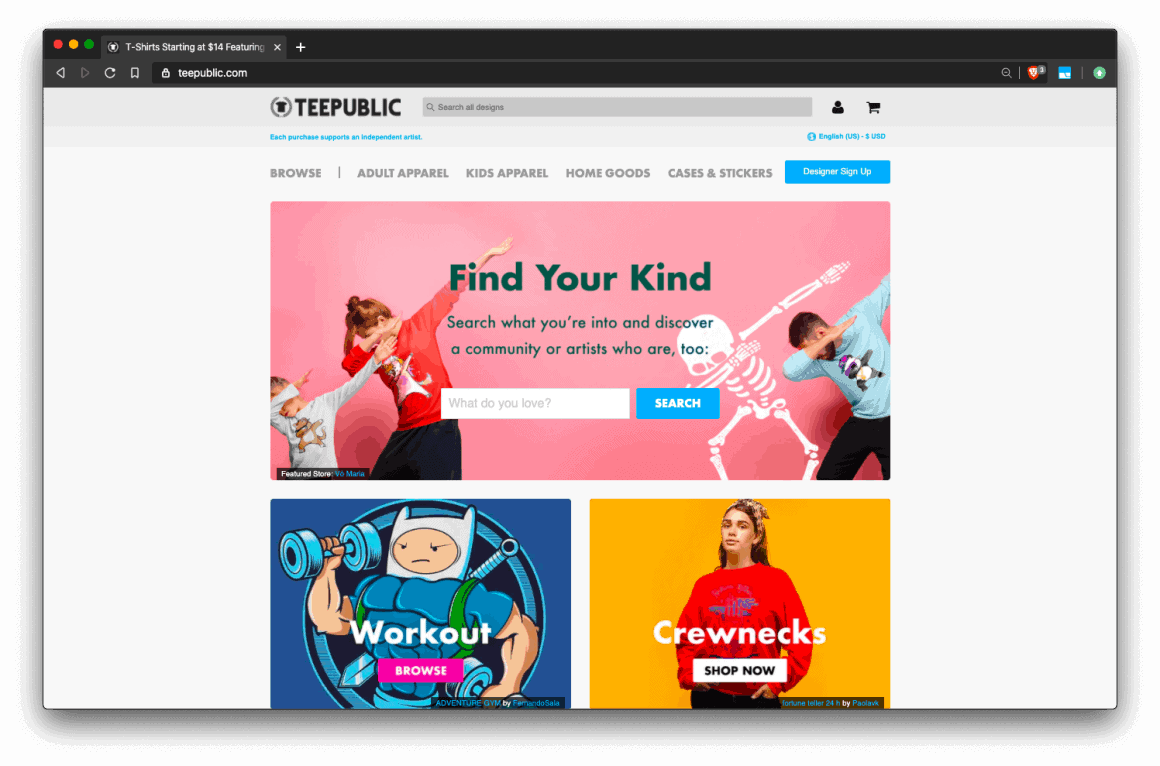
Teepublic
Teepublic is an underdog t-shirt marketplace that seems to have less competition in many niches, and we’ve done pretty well with it.
This might be because it repels some designers;
Its dashboard is archaic, but it gets the job done. Pricing is simplified (all products on the site are the same price/margins), and they run regular sales you have no control over.
Teepublic is cheap. Margins aren’t the best. But the lack of work uploading a design, I mean –why not?
Hordes of thrifty shoppers and indie/edgy design aficionados shop this site. Our edgiest designs do best on Teepublic.
Upload your design and choose which product you’d like to offer it on. POD products on Teepublic include shirts, hoodies, stickers, mugs, pins, onesies, wall art, pillows, phone cases, notebooks, and tapestries, among other things. Tweak how it looks for each one for best results.
Sign up for Teepublic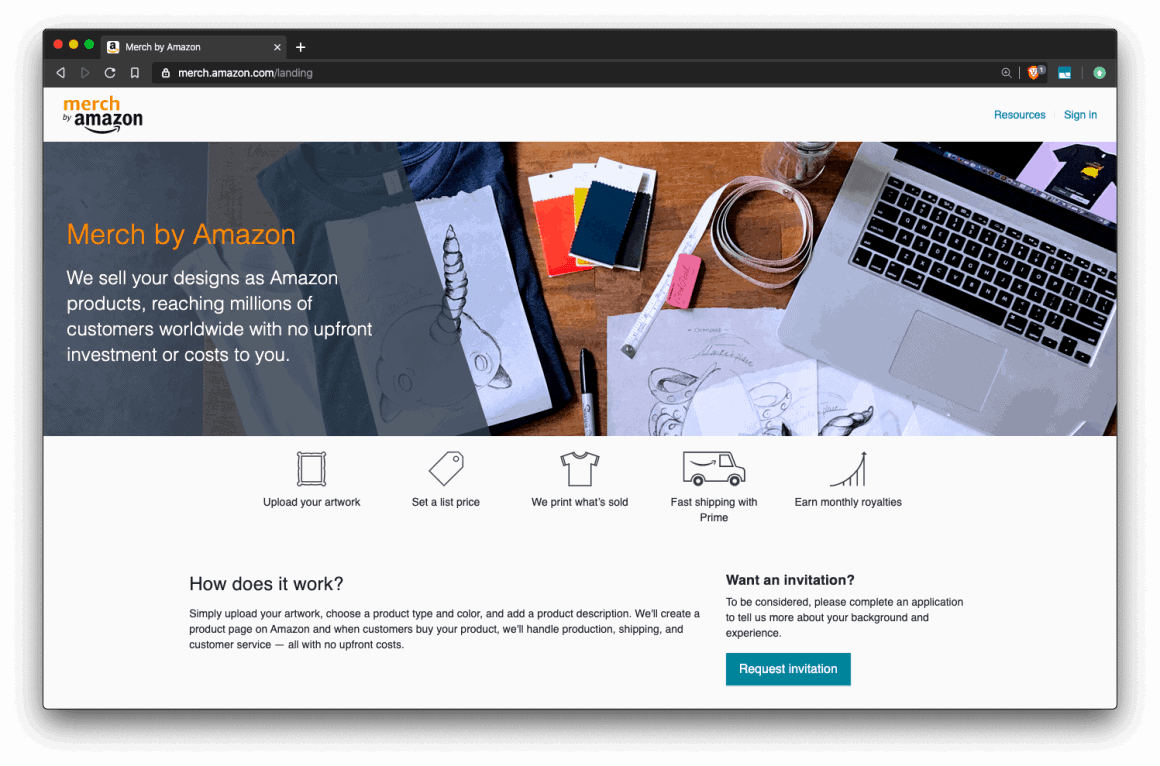
Merch by Amazon
Merch by Amazon is by Amazon, the ‘god emperor of ecommerce’. Its search engine is powerful. Limited product offering, just enough to satiate the masses.
Most of us have used Amazon, America loves it; come up in its search results, make the monies.
They’re not allowing everyone who requests an invite to get an account yet, or keep one for very long if their products don’t sell, or they ruffle feathers.
Amazon is subject to much scrutiny, pressure to sell/perform, and so are your designs if they’re hosted there. You may want to get the hang of what sells on another platform before tackling Merch by Amazon. Not necessarily a good place for edgy content.
Sign up for Merch by Amazon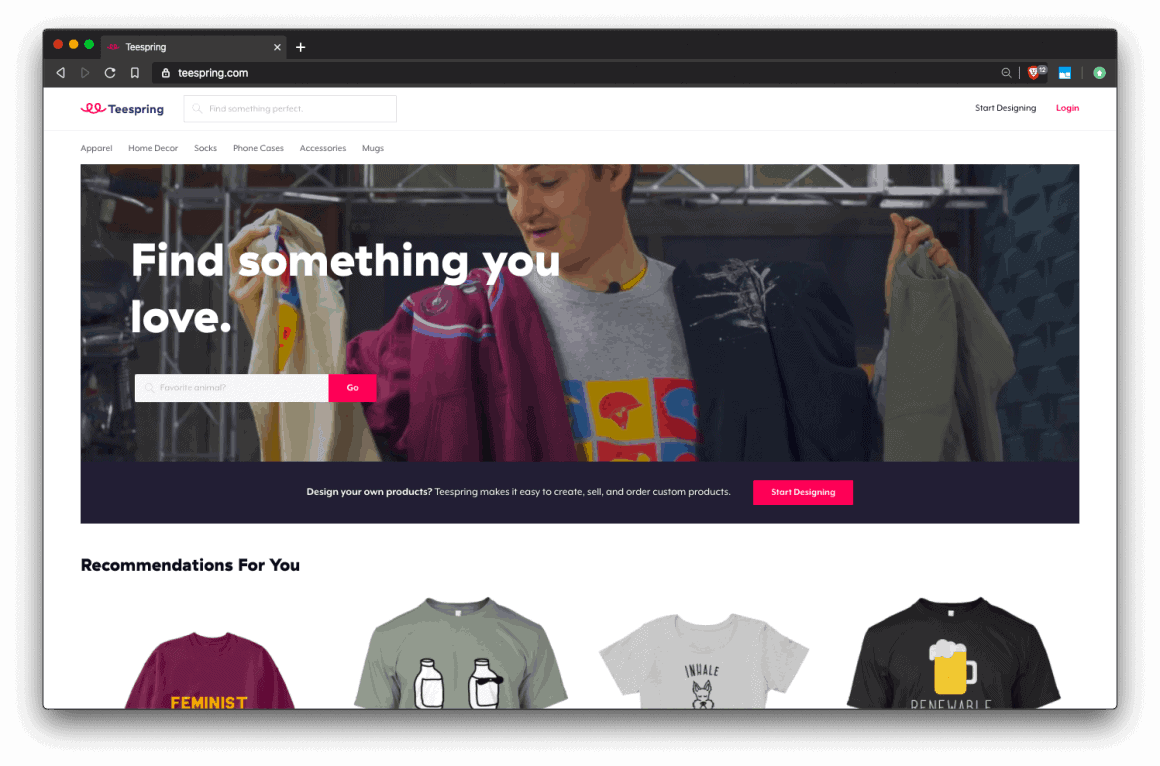
Teespring
Teespring was the original t-shirt money-maker. I remember a few friends making sizeable coin back in 2014-2015 by creating t-shirt designs and running Facebook ads with popular fan pages. As in, down-payment-on-a-house kind of ‘sizeable’.
The sizzle has left the pan somewhat, but Teespring is still one of the best places to put mainstream designs to work, and test out flash-in-the-pan pop culture designs or seasonal fare.
Teespring’s product lineup has also expanded over the years to also include home decor items, mugs, and accessories like phone cases and tote bags.
Sign up for TeespringProduct Design
Learning how to sell shirts comes with having to shoulder the design work, one way or the other.
Let’s go over the following;
- Choosing an idea
- Design tools
- Outsourcing design
- Zero upfront cost ideas
- Warnings and advice
The Idea
As the driving force behind your t-shirt design, first you’ll have to choose an idea.
Money-making ‘evergreen’ t-shirt design ideas;
- Memes and pop culture
- Motivational quotes
- Politics, social justice and civil rights
- Events and conferences
- Schools and universities
- Clubs and organisations
- Non-profits and charities
- Life milestones
- Animals and pets
- Beer and alcohol
- Barbecue
- History
- Family
- Career
- Holidays
- Fitness
If you’d like to learn more about choosing a profitable t-shirt idea, you could port over the points made in our how to choose a profitable blog idea article –this post explains how to use existing marketplaces and search engines to find out what sells most.
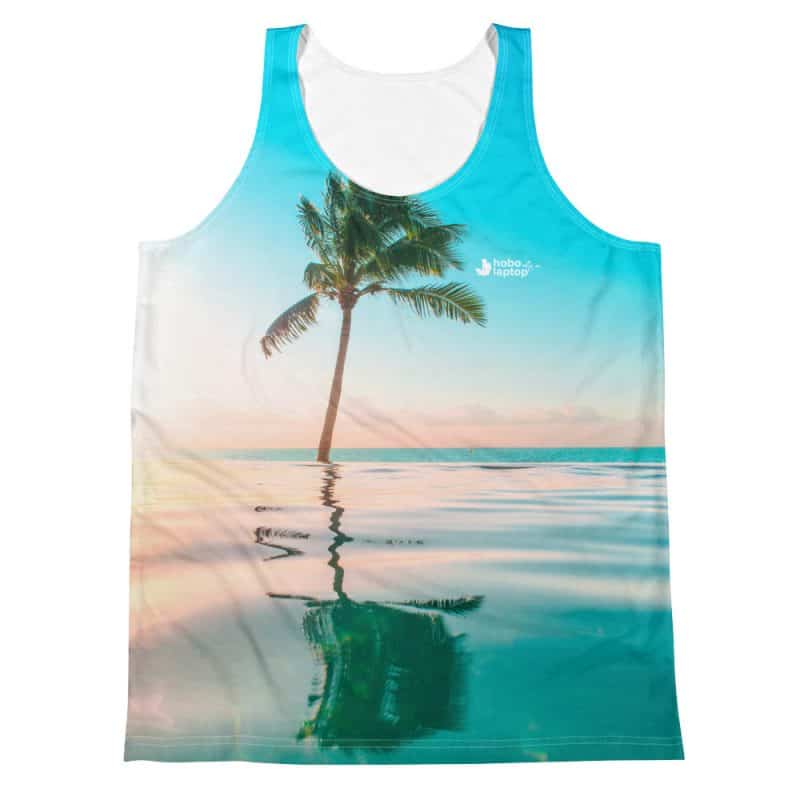
Design Requirements
In order to create designs that pass quality standards for most fulfilment partners, ensure your designs adhere to the following standards;
- 150 DPI minimum on small products, 300 DPI for anything else
- CMYK color mode
- Transparent background
- No effects like ‘Drop Shadow’ or ‘Glow’
- All fonts are rasterized
- Exported as EPS, PNG, JPG
T-Shirt Design Tools
The following design tools were hand picked with a focus on saving time in the product design phase, whether you’re doing it yourself or outsourcing design.

Canva
Canva is a simplified, “drag and drop” graphic-design tool website and provides access to photographs, vector images, graphics, and fonts. It is used by non-designers as well as professionals.
Canva’s tools can be used for both web and print media design and graphics. It’s free to use, although some of the best creative bits and pieces it offers are only available with a premium subscription.
MerchInformer (below) may be a better option for those willing to invest a little into selling t-shirts online.
Sign up for CanvaMerchInformer
MerchInformer is a professional tool that will help you realize your product design goals from concept to completion and make selling t shirts online easier with data.
MerchInformer contains step-by-step tutorials that will help you start t-shirt printing online from scratch, and the tools you need to do it right. All insights and tools are created by successful merch sellers.
In addition to it’s built-in online course (which immensely rivals this guide), MerchInformer has a Canva-like t-shirt design tool, competition checker, listing optimiser, keyword finder, trademark search tool, trend hunter, merch analytics and more.
Shovels are cheap; knowing where to put them is priceless –that’s what MerchInformer is all about.
Sign up for MerchInformer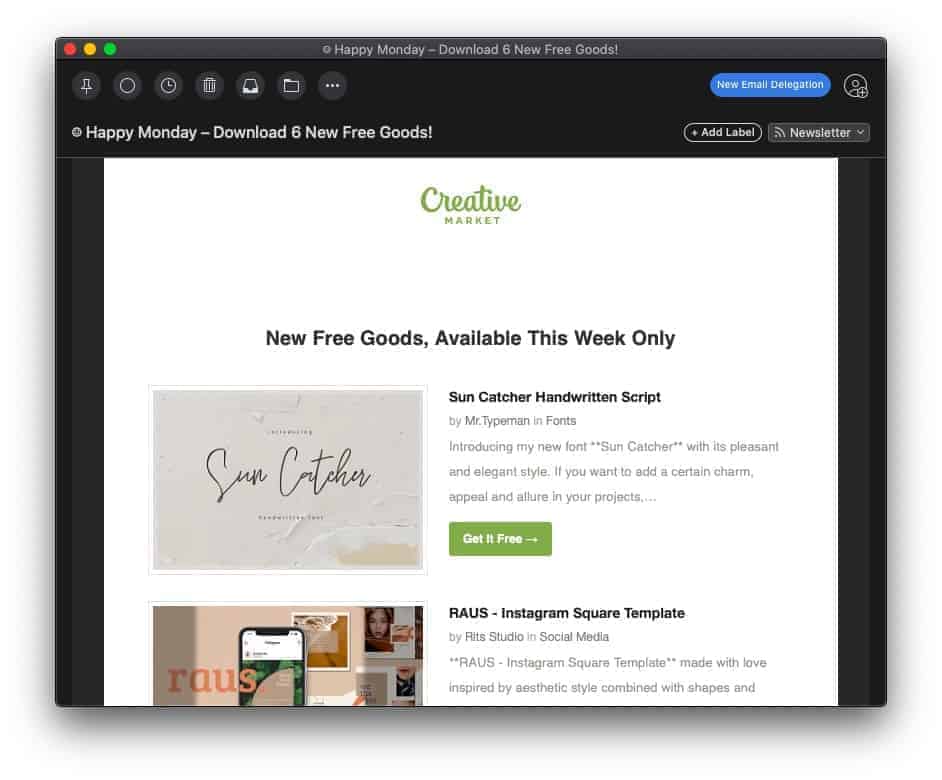
Creative Market
Creative Market is a great place to pick up pre-made fonts, graphics, design templates, and other creative assets a la carte, which you can use to make professional looking designs faster.

They also offer 6 freebies every week like the font above (free for the week of Oct. 14, 2019), delivered right to your inbox.
Not bad; sign up for the free stuff, and stick around for hot creative assets you can use to save time and sell more product.
This one is a favorite of a lot of semi-famous bloggers we know, have ghost-written for, and respect.
Sign up for Creative MarketUnsplash
Unsplash is my fave place to find images for our website when I need more photos to fill out an article, and when I produce some of the prints we sell on a handful of our websites.
Unsplash provides high quality photographs that you can use for free, even commercially, without having to pay the photographer or attribute them because they are licensed under the Creative Commons license (no attribution, commercial use permitted).
Yup. You can use these images with no hooks.
I mentioned earlier that I’d tell you how to do your product design with no upfront cost –this is one of those tools. You can pull a high resolution photo from Unsplash, put it on a framed print or shirt or pillow in seconds, sell it, and keep all the profit.
Sign up for Unsplash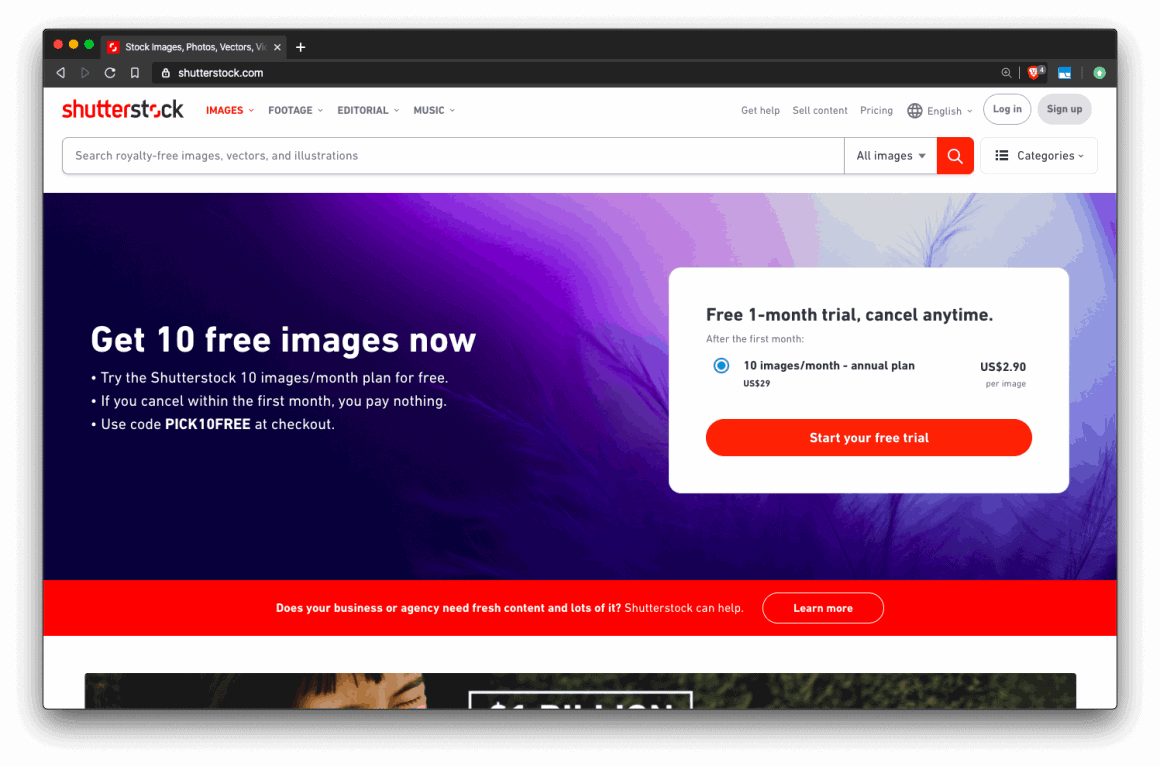
Shutterstock
Unsplash is amazing, but some images on there are so incredibly over-used that they lack that special zing! when people look at them because it feels more like deja vu.
When you need unique images, ones that fewer people are using, check out Shutterstock. We’ve even got some images uploaded there to generate a passive income, check ’em out!
They’ve got a decent free trial dealio; get free photos, cancel any time during the first month.
Sign up for Shutterstock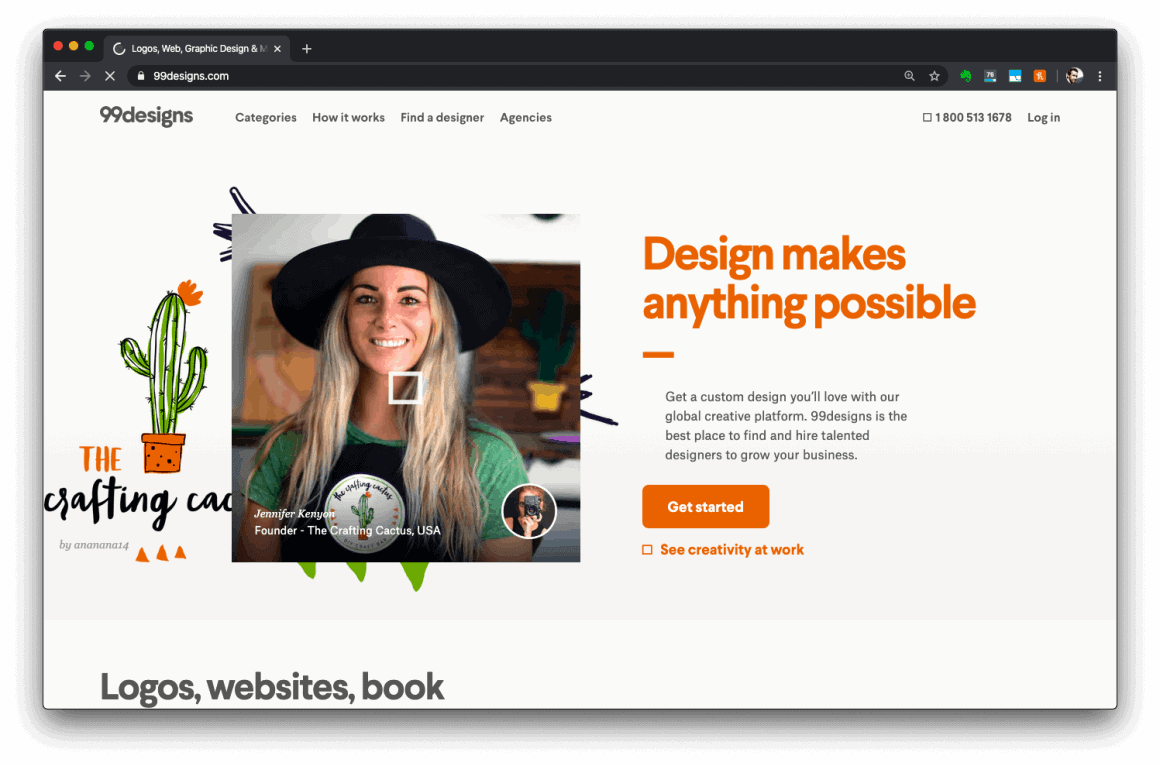
Outsourcing Design
Once you’ve got the hang of how to sell merch, outsourcing design is often the next logical step. Outsourcing design allows you to spend more time on the real money-making aspects of your online business, like finding your next big t-shirt idea.
99Designs
Frankly, 99Designs is the best place to outsource design to if you’re all thumbs when it comes to Photoshop –at least in our opinion.
You’ll notice we didn’t mention Fiverr too much on this guide, as we’ve never had much success with designs we bought on Fiverr –it’s hit or miss.
99Designs changes all that, in a big way. It’s not a site full of hustlers ripping stock media behind your back and telling you it’s original, as we’ve seen with Fiverr. That shit can get you in trouble.
99Designs is agency-quality, at a price t-shirt designers can afford after they’ve made a little bit of bank. You get what you pay for, unlike Fiverr which is hit or miss. And it’s Canadian, so there’s that.
Sign up for 99Designs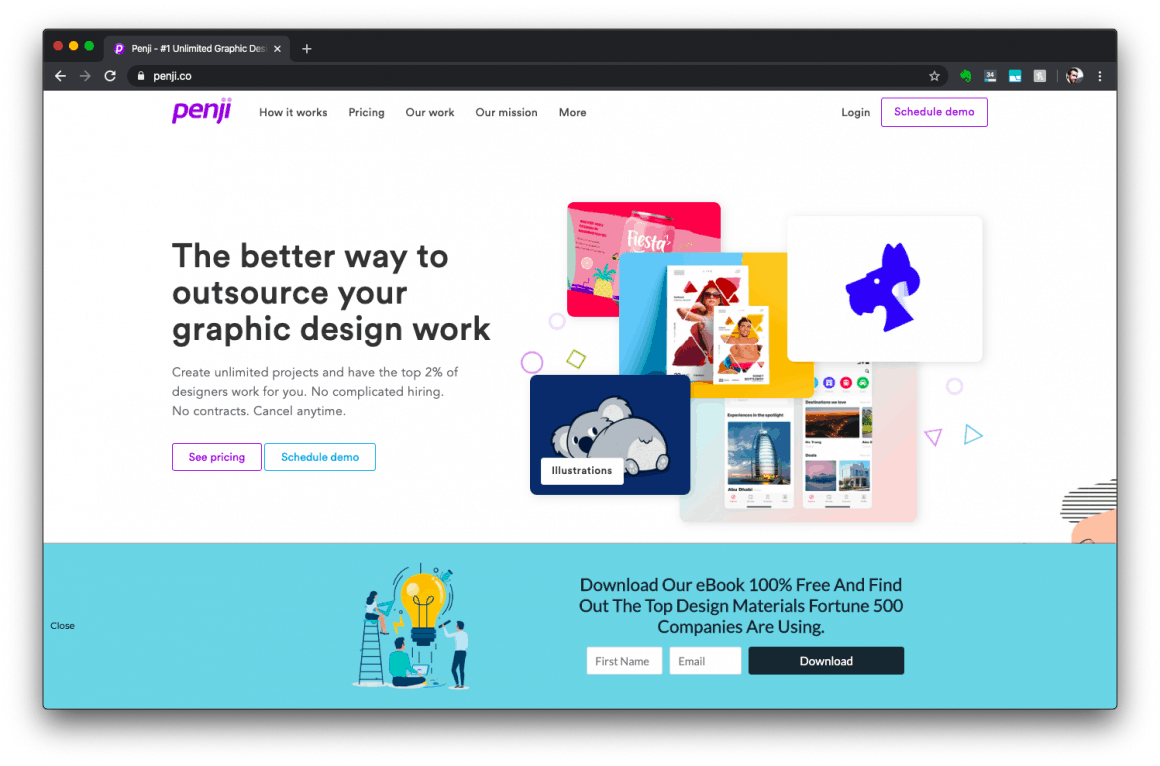
Penji
Penji is pretty much neck-and-neck with 99Designs, with a little extra; they do unlimited design work on a monthly retainer.
Unlimited design, folks. One monthly fee.
This is for hardcore merch designers who create new and fresh designs on a regular basis.
The pricing model is deal for creating those trendy but flash-in-the-pan pop culture type personalised t-shirts that come and go quickly. As soon as you’ve identified a trend, Penji is willing and waiting to make good on it for you.
Pricing starts at just over $300 USD per month, so this is a suggestion for beginners with coin, or intermediate-to-advanced designers who know exactly what they’re looking for.
Sign up for Penji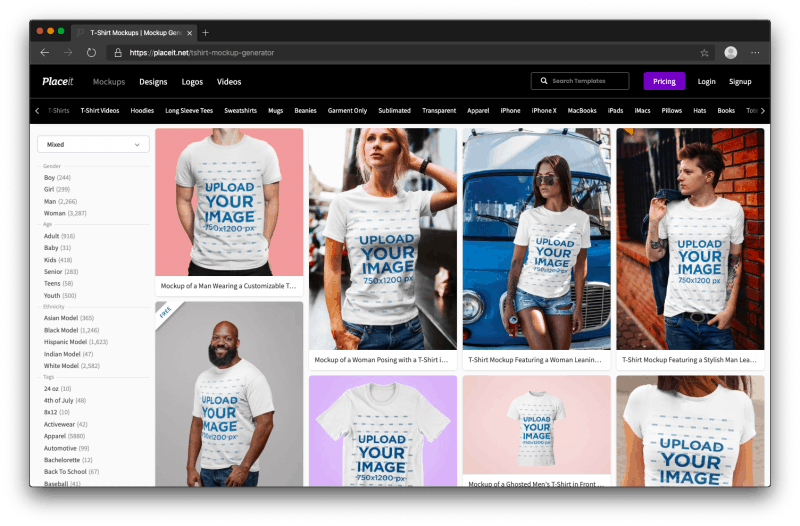
Placeit
Placeit is a must-have online merchandising tool for realistic looking mockups. We’ve got examples throughout this article –pretty much any time you see a professionally shot photo with our merch in it, we likely created it with Placeit’s mockup generator tool.
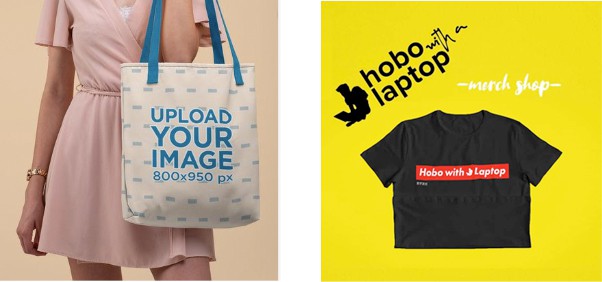
It’s a huge time saver and they’ve got enough selection to ensure that customers don’t get a sense of déjà vu when they see your product photos.
Generate mockups of just about anything with a screen, coffee mugs, tote bags, t-shirts, hoodies, onesies, pillows, hats, sports bras, you name it.
Sign up for PlaceitAlright, I know you’re eager to get started and a handful of you won’t have two coins to rub together when you get started –you’re mostly interested in learning to design and sell merchandise online for free.
If that sounds like you, there’s a few low-brow ways to get started.
But I will say this –you may want to try these out to get started, to learn, but they shouldn’t be your standard way of doing business because they fizzle out quickly and they’re not exactly what I’d call a respectable way to make money selling t-shirts online.
Unsplash has a ton of free-to-use-commercially-without-attribution images, and a fraction of them are high enough resolution to put on a shirt, pillow, or canvas print.
Find super high-res images on Unsplash and try selling prints of them. As mentioned previously, we’ve tried this. It works. It’s fully legal. But we felt guilty doing it.
But hey, the photographer signed up for it –there’s always that ‘champagne socialist’ who comes out on top, it may as well be you.
Just be sure to invest the profit back into your merch business to buy unique creative work that you actually own the rights to, so you can do it the right way and be able to look yourself in the mirror at night.
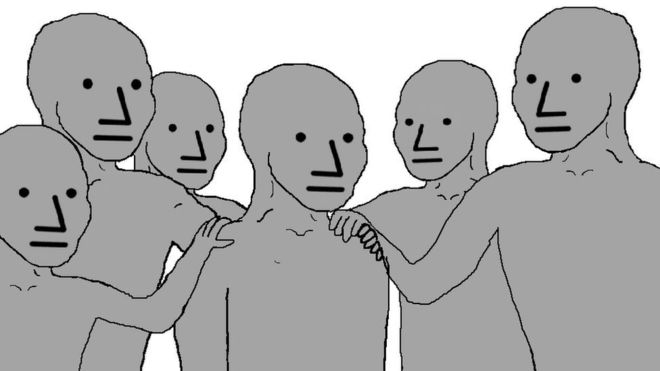
Recreating popular memes is easy; you shouldn’t use other peoples’ copyrighted works in your prints –but you can rotoscope them, which is a fancy word for tracing.
Most memes are simple and rough looking, like it was made by a 4th grader on Microsoft Paint. You can capitalize on that. The NPC character is a perfect example of this (above).
Find a meme, trace it at high res, and put it on a shirt.
Okay, I feel sufficiently dirty now. That’s all I got for inspiration for you trolls —now go get at it. Make memes great again.
Warnings
If you’re going to make a serious effort at selling t-shirts online, you’re likely going to run into trademark issues from time to time. It happens to the best of us, even without being familiar with the trademark we’re violating. Live and learn. Often it’s an honest mistake.
The best way to avoid getting sued or your content pulled from a marketplace is to ensure you’re not violating someone else’s trademark.
MerchInformer’s trademark search tool is the best way to protect yourself. As soon as you have enough coin in your pocket, I suggest you use it.
It isn’t sustainable or repeatable to think you can get away with being a trademark thief on the regular. We recommend you do not violate other people’s copyrights or trademarks.
You could get sued, hard –and rightly so. No one wants their designs being stolen to line the pockets of some shill on the internet.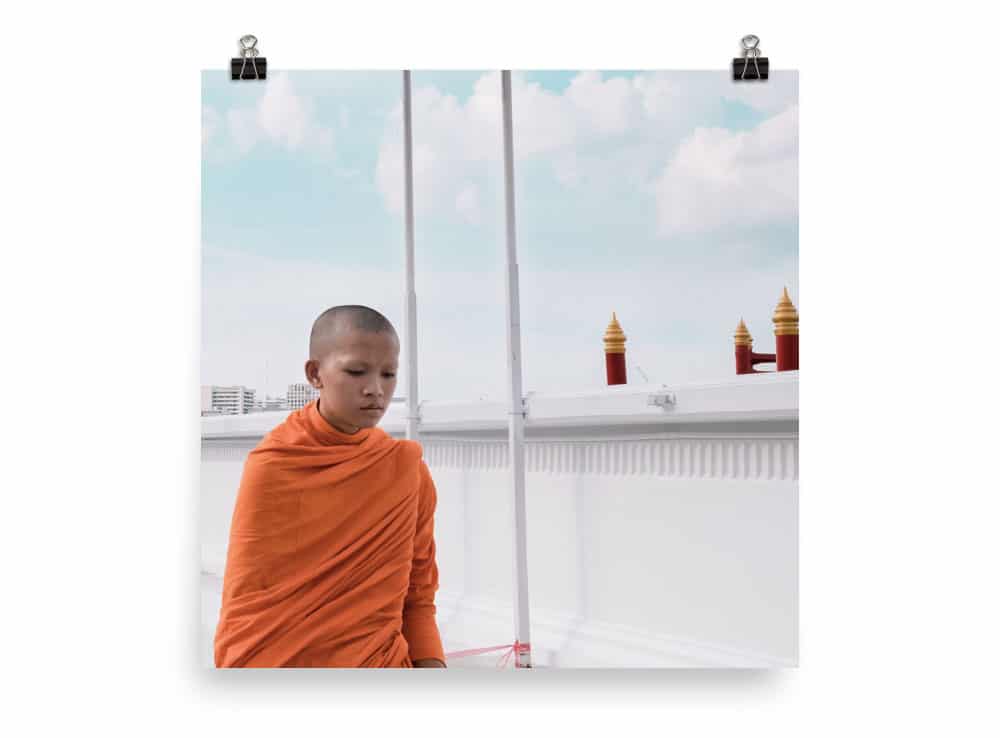
In Summary
Now you can design and sell merchandise online for free, with no upfront expenses to get started, and no charge to you for warehousing if there’s no sale.
Passive Income
The money you pull out of t-shirt printing online depends on how hard you hustle at the beginning, where you do your research, how ‘evergreen’ your content is, how many designs strike a chord with fans, how/where you market them, and who your dropshipping partner is.
Even with a trickle of sales you could afford to commission new designs, run ads, and keep growing into a $5,000 per month digital nomad income stream (if that’s your thing).
And that my friends is the purple fuzzy unicorn commonly known as passive income. And there’s nothing “passive” about it, at first.
It’s a lot of hard work to decipher trends and what will sell.
And finally; if you need help getting your own website up, check out our free guide to learn blogging.
What did you think of this guide to selling products online without inventory? Are there any design tools or t-shirt selling courses you recommend?
Let everyone know in the comments, and thanks for stopping by.
